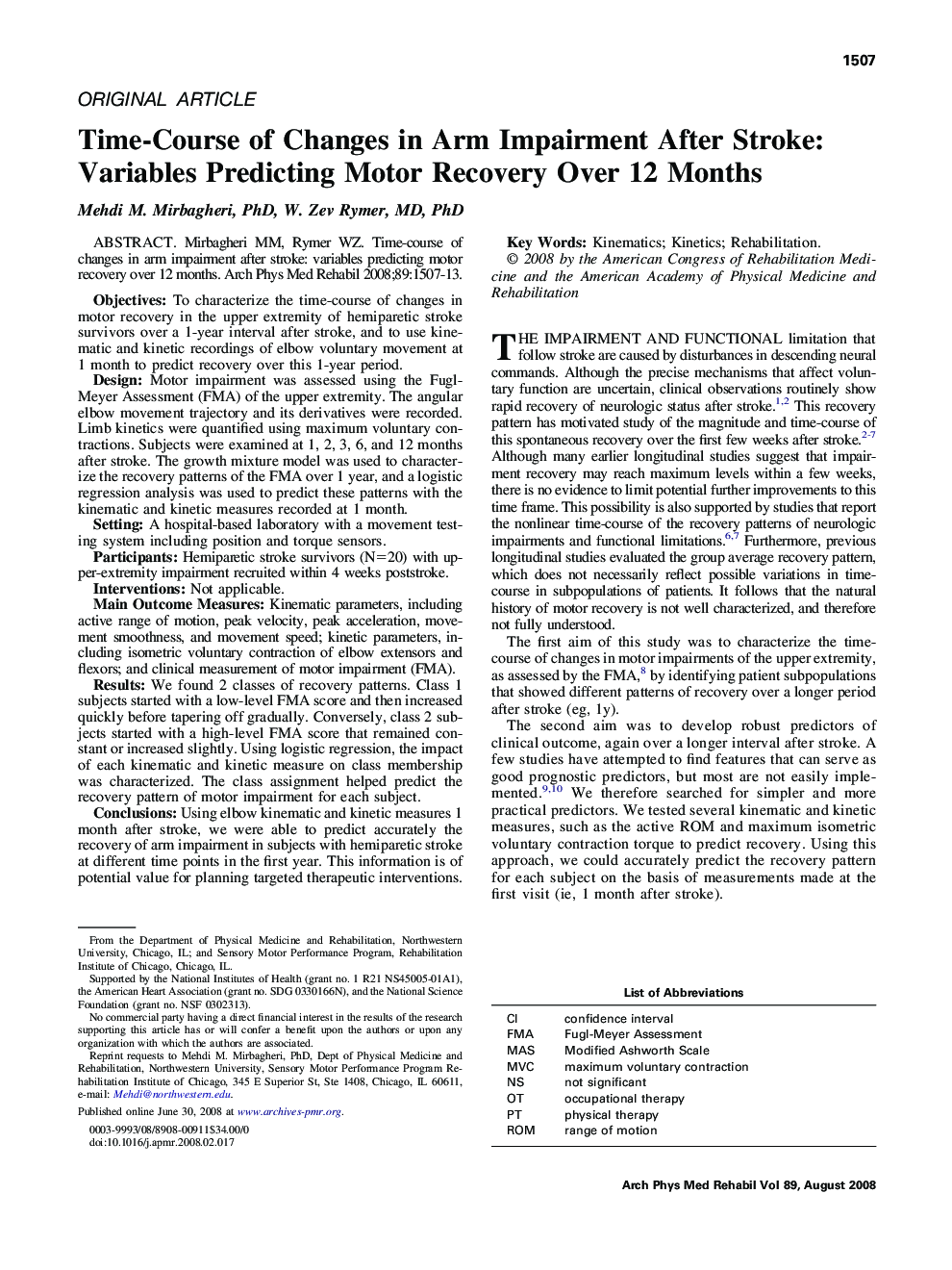| کد مقاله | کد نشریه | سال انتشار | مقاله انگلیسی | نسخه تمام متن |
|---|---|---|---|---|
| 3451465 | 1595776 | 2008 | 7 صفحه PDF | دانلود رایگان |

Mirbagheri MM, Rymer WZ. Time-course of changes in arm impairment after stroke: variables predicting motor recovery over 12 months.ObjectivesTo characterize the time-course of changes in motor recovery in the upper extremity of hemiparetic stroke survivors over a 1-year interval after stroke, and to use kinematic and kinetic recordings of elbow voluntary movement at 1 month to predict recovery over this 1-year period.DesignMotor impairment was assessed using the Fugl-Meyer Assessment (FMA) of the upper extremity. The angular elbow movement trajectory and its derivatives were recorded. Limb kinetics were quantified using maximum voluntary contractions. Subjects were examined at 1, 2, 3, 6, and 12 months after stroke. The growth mixture model was used to characterize the recovery patterns of the FMA over 1 year, and a logistic regression analysis was used to predict these patterns with the kinematic and kinetic measures recorded at 1 month.SettingA hospital-based laboratory with a movement testing system including position and torque sensors.ParticipantsHemiparetic stroke survivors (N=20) with upper-extremity impairment recruited within 4 weeks poststroke.InterventionsNot applicable.Main Outcome MeasuresKinematic parameters, including active range of motion, peak velocity, peak acceleration, movement smoothness, and movement speed; kinetic parameters, including isometric voluntary contraction of elbow extensors and flexors; and clinical measurement of motor impairment (FMA).ResultsWe found 2 classes of recovery patterns. Class 1 subjects started with a low-level FMA score and then increased quickly before tapering off gradually. Conversely, class 2 subjects started with a high-level FMA score that remained constant or increased slightly. Using logistic regression, the impact of each kinematic and kinetic measure on class membership was characterized. The class assignment helped predict the recovery pattern of motor impairment for each subject.ConclusionsUsing elbow kinematic and kinetic measures 1 month after stroke, we were able to predict accurately the recovery of arm impairment in subjects with hemiparetic stroke at different time points in the first year. This information is of potential value for planning targeted therapeutic interventions.
Journal: Archives of Physical Medicine and Rehabilitation - Volume 89, Issue 8, August 2008, Pages 1507–1513